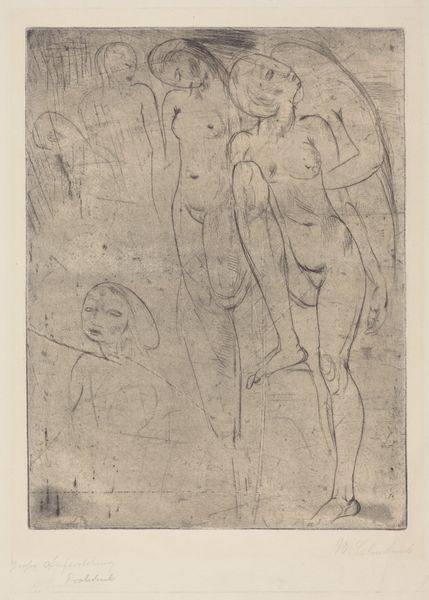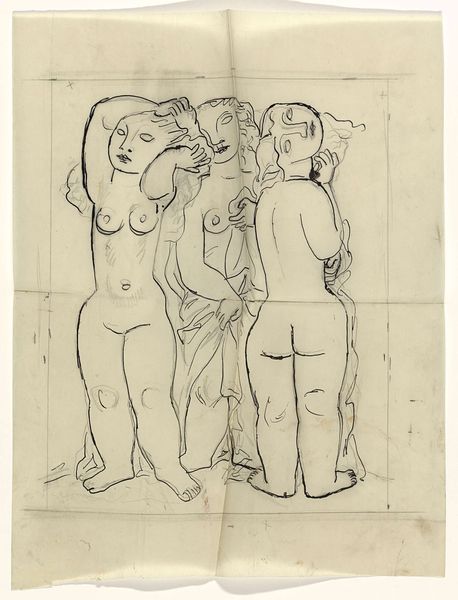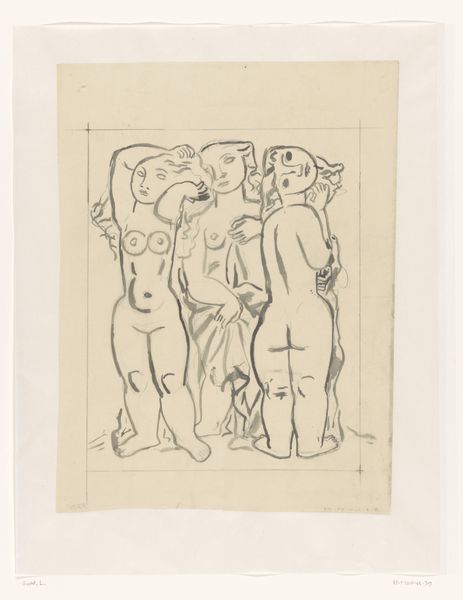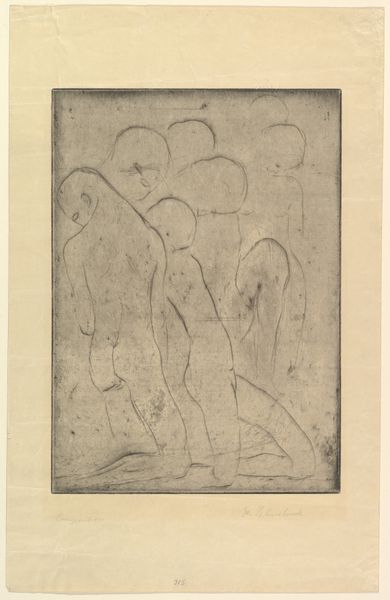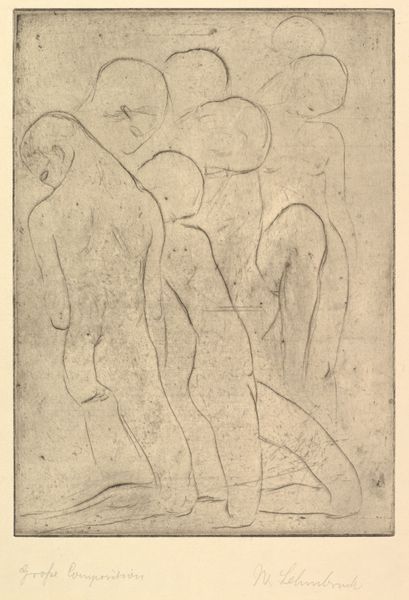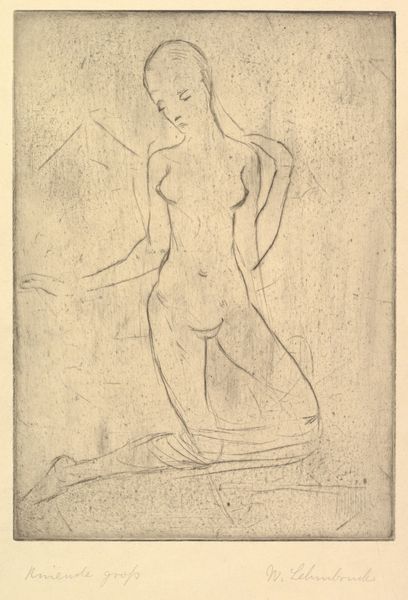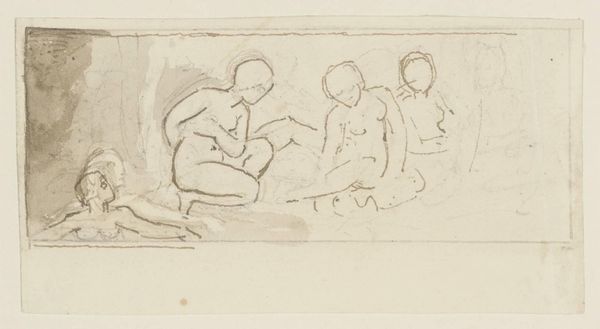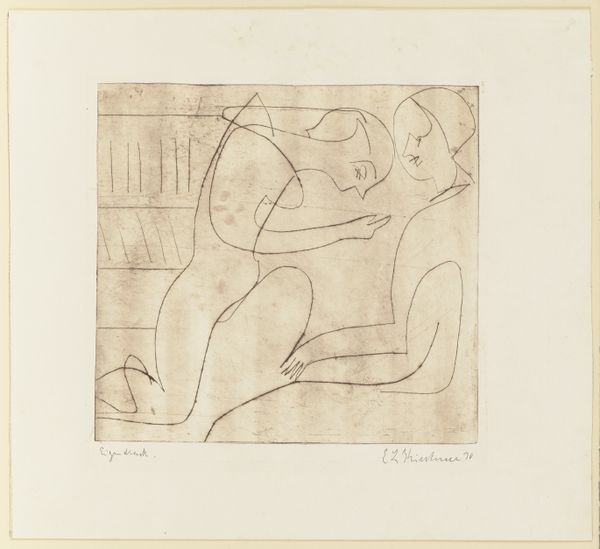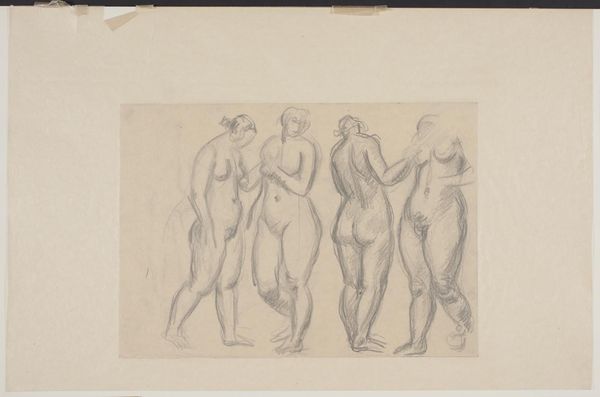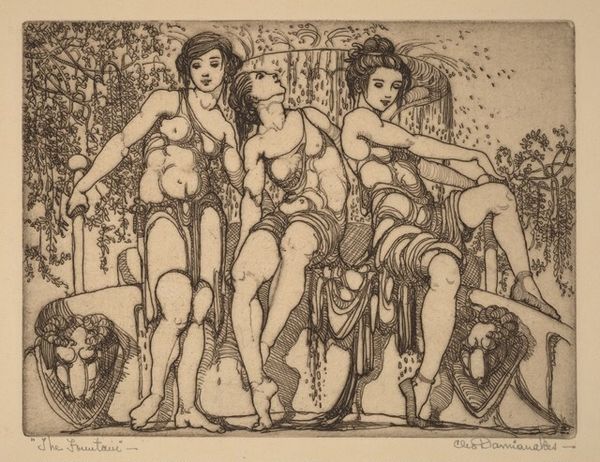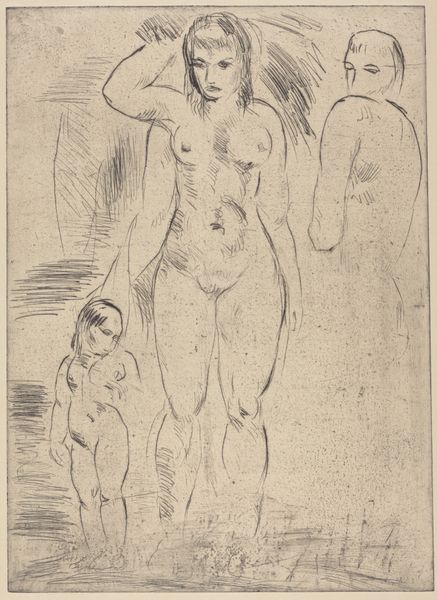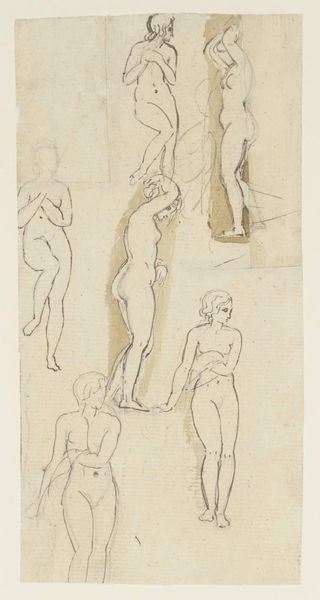
drawing, graphic-art, print
#
drawing
#
graphic-art
# print
#
pencil sketch
#
figuration
#
expressionism
#
nude
Copyright: National Gallery of Art: CC0 1.0
Curator: Wilhelm Lehmbruck's 1913 print, "Three Kneeling Women," a compelling example of his exploration into the human form through graphic art. Editor: The immediate impact is one of vulnerability. The women are presented with such stark, raw lines—it's almost like looking at preliminary sketches, capturing a very personal moment. Curator: Indeed. Lehmbruck was deeply influenced by the Expressionist movement, which prioritized emotional impact over strict representation. Consider the time, 1913. Germany, on the brink of World War I, was a society grappling with intense social and political tensions. Editor: And that tension is certainly evident in the contorted poses and downcast gazes. Lehmbruck isn't presenting idealized figures. Instead, he exaggerates certain anatomical features while minimizing others, drawing our attention to line and form. It’s more of an evocation than a portrait. Curator: Precisely. Look at the institutional embrace of Expressionism during that period—it served as a vital outlet for anxieties that simmered beneath the surface. Lehmbruck uses these figures, these 'kneeling women', as vessels to express that sentiment. It questions accepted notions of female representation, resisting beauty, perhaps opting for brutal honesty instead. Editor: The etching medium further emphasizes this rawness. The texture adds to the work's slightly distressed character, mirroring the figures' poses and gestures, and, as you stated, those turbulent times. It begs for our introspection. Curator: It's a potent blend of social context and artistic innovation. The "Three Kneeling Women" invites us to think about the female body's portrayal at a time of great cultural uncertainty. Editor: Absolutely. On a visual level, the composition emphasizes movement. On another level, one wonders what the three women suggest about social roles and status at the time of the artwork's making. Curator: Considering both the formal qualities and sociohistorical environment definitely enriches our comprehension of this artwork. Editor: Agreed. By looking carefully, one sees beyond a simple figural representation. The graphic nature helps further cement a timeless scene.
Comments
No comments
Be the first to comment and join the conversation on the ultimate creative platform.

